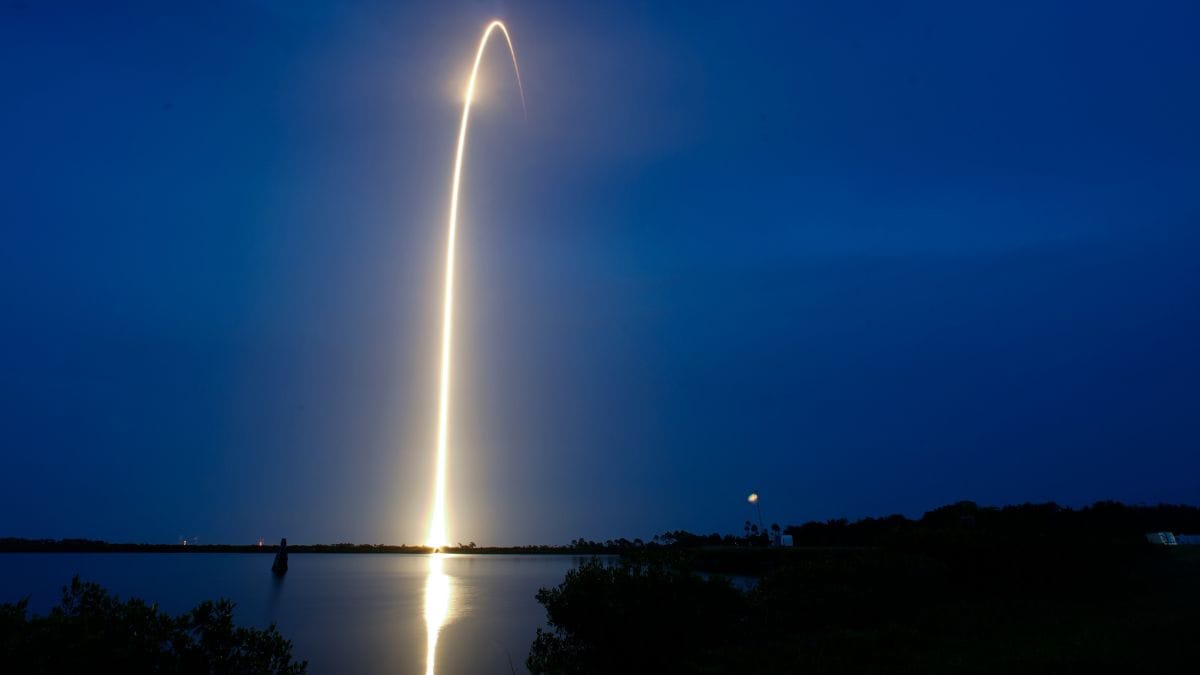China’s space strategists are increasingly focused on one name:
Starlink.
The satellite internet network created by Elon Musk’s SpaceX has rapidly transformed from an ambitious tech project into an essential piece of global infrastructure, and Beijing now sees it as a major security challenge.
Starlink’s impact has been swift and sweeping. Since the first launches in 2019, it has built the world’s largest low-Earth orbit satellite network.
Harvard-Smithsonian astronomer Jonathan McDowell notes that Starlink now operates over 8,000 active satellites, amounting to nearly two-thirds of everything orbiting Earth, reported AP.
SpaceX ultimately aims to deploy tens of thousands more — an unprecedented scale that no competitor has come close to matching.
That scale has translated into near-global coverage. Starlink beams internet to more than 140 countries, providing affordable, high-speed connections even in remote or hard-to-reach areas.
Recent expansions into Vietnam, Pakistan, Niger, Somalia and the Democratic Republic of Congo underscore its reach.
In June, Starlink
finally won approval to operate in India, overcoming years of regulatory hurdles and political resistance to open a market of 1.5 billion people.
There are only a handful of blind spots left on Starlink’s map: North Korea, Iran and China.
For Beijing, the implications go far beyond commercial internet access.
Starlink’s tight integration with US military operations has led Chinese researchers and government officials to see it as both a strategic threat and a symbol of American technological dominance.
“As the United States integrates Starlink technology into military space assets to gain a strategic advantage over its adversaries, other countries increasingly perceive Starlink as a security threat in nuclear, space, and cyber domains,” wrote professors from China’s National University of Defense Technology in a 2023 paper.
The Ukraine turning point
Concerns about Starlink escalated dramatically after
Russia’s 2022 full-scale invasion of Ukraine. Starlink terminals became a critical tool for Ukraine’s military, allowing secure battlefield communications and controlling surveillance and attack drones.
The war revealed not only how effective Starlink could be in wartime, but also how much power rested in the hands of Musk himself.
Because Starlink coverage could be extended — or withheld — by Musk, Ukrainian officials saw him as both an enabler and a gatekeeper.
He reportedly refused to extend Starlink service to support a Ukrainian counteroffensive into Crimea. For Chinese military planners, Ukraine was a clear warning.
If Starlink could tip the balance on one battlefield, it could also be used against them in any future conflict.
Nearly all of the 64 academic papers on Starlink reviewed by the Associated Press in Chinese journals were published after the Ukraine war began, suggesting the conflict fundamentally shifted China’s strategic approach to the technology.
Nitin Pai, co-founder of the Indian think tank Takshashila Institution, summed up the shift in thinking beyond China’s borders, “Ukraine was a warning shot for the rest of us. For the last 20 years, we were quite aware of the fact that giving important government contracts to Chinese companies is risky because Chinese companies operate as appendages of the Chinese Communist Party. Therefore, it’s a risk because the Chinese Communist Party can use technology as a lever against you. Now it’s no different with the Americans.”
How Beijing is planning to counter Starlink
The studies coming out of China reveal just how seriously the country is taking the Starlink challenge — and how far its scientists are willing to go to neutralise it.
Some of the proposals seem straight out of science fiction: stealth submarines armed with lasers to blind satellites, attack satellites equipped with ion thrusters, and the use of corrosive materials to damage Starlink’s solar panels or batteries.
Other suggestions are more grounded but no less aggressive. Engineers from the People’s Liberation Army have explored ideas such as launching fleets of “chaser satellites” to shadow Starlink units and potentially interfere with them.
Researchers have also discussed using commercial optical telescopes to track the constellation and even deploying powerful ground-based lasers to burn out sensitive components.
Beyond direct attacks, some papers suggest indirect tactics — like sabotaging Starlink’s supply chain.
A 2023 study by the government-backed China Industrial Control Systems Cyber Emergency Response Team highlighted potential vulnerabilities in Starlink’s production network.
“The company has more than 140 first-tier suppliers and a large number of second-tier and third-tier suppliers downstream,” the authors noted. “The supervision for cybersecurity is limited.”
Other academics have pushed for using diplomacy and international regulations as tools to hem in Starlink’s reach, while still keeping active countermeasures on the table.
One paper published in China carried a blunt title: “Watch out for that Starlink.”
Why the world is wary — not just China
China isn’t alone in worrying about Starlink’s growing clout. Some of Washington’s own allies have raised concerns about a global communications infrastructure dominated by a single private company and an unpredictable owner.
Musk’s personal and political entanglements have amplified those concerns. He poured tens of millions into United States President Donald Trump’s reelection bid and briefly served as a government adviser
before publicly breaking with Trump in May.
Musk’s influence has spilled into European politics as well, where he has used his platform to promote populist and hard-right voices.
Meanwhile, SpaceX continues to be intertwined with core US government functions. It launches military satellites, recovers stranded astronauts, and holds multi-billion-dollar contracts with Nasa and the National Reconnaissance Office.
That web of connections leaves many foreign governments uneasy about relying on Starlink for critical services.
Christophe Grudler, a French member of the European Parliament who spearheaded work on the EU’s IRIS2 satellite project, voiced Europe’s strategic unease, “We are allies with the United States of America, but we need to have our strategic autonomy. The risk is not having our destiny in our own hands.”
Competitors struggle to catch up
For all the anxiety Starlink has generated, no other player is close to matching its scale.
Amazon founder Jeff Bezos is building Project Kuiper, which launched its first internet satellites in April 2025. But Kuiper has only 78 satellites in orbit so far — a fraction of its planned 3,232.
OneWeb, based in London, has around 650 satellites, far below its initial ambitions.
The European Union is investing billions into its own IRIS2 constellation, but progress has been slow, forcing Brussels to ask member states to hold off on signing Starlink contracts until the EU system is ready.
Even China’s own efforts are still in their early phases.
China builds its own mega-constellations
Recognising that it cannot simply block Starlink forever, Beijing is also racing to create a homegrown equivalent — one that would serve both national security needs and commercial ambitions abroad.
In 2021, the government created the state-owned China SatNet company to oversee the launch of a new constellation called Guowang.
The goal: 13,000 satellites. So far, 60 are operational.
The private sector is pitching in too. Shanghai-backed Qianfan has launched 90 satellites and plans a fleet of 15,000.
The company is already forging international partnerships, signing a deal with Brazil in November 2024 after Musk
clashed publicly with a Brazilian judge who froze SpaceX’s accounts in the country.
Qianfan is also targeting customers in Kazakhstan, Malaysia, Oman, Pakistan and Uzbekistan, with ambitions to expand into Africa.
But despite these efforts, China remains far behind Musk’s constellation — and catching up will take years.
A new space race?
Starlink’s dominance has effectively turned low-Earth orbit into a new arena for geopolitical competition.
Starlink’s near-monopoly status gives SpaceX — and by extension, Musk — leverage that few private companies have ever wielded. With service spanning 140 countries, SpaceX can dictate the terms of connectivity for entire regions.
And because the same satellites that fly over China also pass over Europe, Ukraine, and the US, any attempt by Beijing to disrupt the constellation could have global consequences.
For Beijing, the challenge is twofold: neutralsze Starlink’s potential as a tool of US military power and ensure China is not left dependent on foreign networks in the future.
That has triggered what amounts to a new space race — one not defined by who reaches the Moon first, but by who controls the flow of data across Earth.
SpaceX, meanwhile, shows no sign of slowing down.
Also Watch:
With inputs from agencies





















